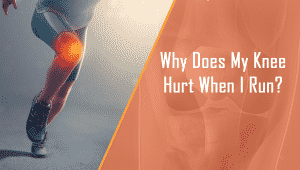Running is an excellent form of exercise that can improve your health and reduce disease risks, but it comes with a significant potential risk for injury. Injuries often arise when the body’s ability to cope with the demands of running are inadequate. This could be due to incorrect technique, mismatched shoes or unfavorable training progressions.
1. You’re not warming up enough
Skipping a proper warm-up can cause you to run at an excessively fast pace, increasing the risk of injury and even impacting performance. A warm-up raises your body’s temperature, increases blood flow to muscles, and may reduce soreness before beginning a session or race.
Additionally, running with an increased pain threshold and fewer injuries makes it more likely that you’ll run safely. To prepare your body for running, it’s beneficial to do a dynamic warm-up that includes running drills, dynamic stretching exercises or even taking a quick jog.
Avoid common running injuries like shin splints, knee pain and tight hamstrings by warming up properly before beginning your run. Cooling down after exercising helps reduce delayed onset muscle soreness (DOMS). And it allows your body to recover from its workout so you’ll be ready for another round of running when the time comes!
2. You’re not hydrating enough
Hydration is essential for runners of all levels, from those running around their neighborhood to competing in endurance events like marathons and half-marathons. Hydration helps ensure you stay safe and perform at your best, no matter the activity.
As a general guideline, runners should drink at least 16 ounces of fluid per pound of body weight lost during an exercise session. This could be water or an electrolyte-rich sports drink that replenishes essential minerals lost through sweating such as potassium.
If you’re uncertain how much water to drink, check your urine for a pale yellow hue. This is an indicator that your body is hydrated; however, it doesn’t tell the whole story.
Athletes often adhere to outdated hydration plans due to either fear of dehydration and the belief that fatigue is caused by it, or simply because they have grown complacent with their current hydrating routine.
3. You’re doing too much too soon
Running can be a great way to improve your health, but you must take precautions against injury. To minimize the likelihood of injury, incorporate proper conditioning into your training program. A successful regimen should include various exercises designed to enhance running form, strength, flexibility and endurance with just enough time spent on each exercise for you to feel and look your best in no time. Just as golfers take time to adapt to increasing training loads and intensity levels gradually over time; rushing the process may increase the likelihood of an injury.
Therefore, patience and consistency are the cornerstones of any successful training program. A common mistake we see newbies make is trying to push themselves too hard by starting their big mileage or speed workout too soon. If you’re experiencing foot and ankle pain, consider seeking professional help from Marino Physiotherapy.
4. You’re running on the wrong surface
As the old saying goes, “dirt is better than asphalt.” And you may have also been told that running on grass and dirt can help protect against injury like Achilles tendonitis and stress fractures. While there are no definitive studies to back this up, it makes intuitive sense.
Running on a hard surface (like pavement) puts an immense amount of force onto your leg – many times your body weight – which must be absorbed by muscles, tendons, ligaments and bones. On the other hand, softer terrain like dirt paths or trails lessens this impact and requires less force to absorb your body’s weight.
Experts don’t advise switching up your running surface unless you genuinely enjoy it or are prepping for a race where a certain surface will be required. Injuries can happen on any surface, so consult your doctor before making any decisions on how best to prevent them or get back into safe running after an injury. If you need help with your running injuries, physical therapy might be the solution you’re looking for.
If you have any questions or would like to schedule an appointment, please contact us at Marino Physiotherapy. You can also learn more about our services and team by visiting our home page.



